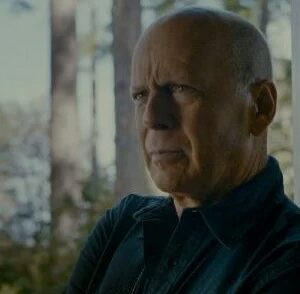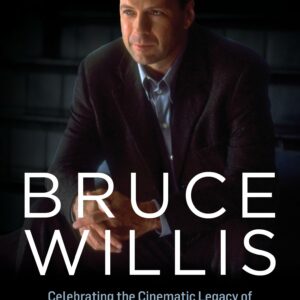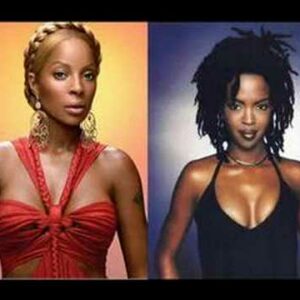Introduction:
In the ever-evolving world of music and visual artistry, there are few artists who have left as profound an impact as Mary J. Blige. Known as the “Queen of Hip-Hop Soul,” her career has been a testament to not only musical innovation but also to the artistic vision that extends beyond the stage and studio, into the realm of music videos. Her ability to merge emotional depth with visual storytelling has made her a groundbreaking figure in both industries. However, behind every iconic music video lies a team of creative minds, technical experts, and unsung heroes who bring the vision to life. These individuals, often working behind the scenes, are the ones who shape the imagery, tone, and narrative that fans experience in Mary J. Blige’s videos.
Music videos are much more than just promotional tools; they are a visual extension of an artist’s identity. They convey emotions that the music itself cannot always fully capture, and Mary J. Blige has always been meticulous about this visual storytelling. But while Blige’s charisma and presence shine in front of the camera, it’s the technical crew working behind the scenes that creates the magic. These are the directors, cinematographers, editors, set designers, and sound engineers who work tirelessly to ensure that the final product is more than just a video—it’s an experience.
In this article, we’ll explore the vital roles of the technical crew in Mary J. Blige’s music videos, from the directors who conceptualize the overarching story to the sound engineers who synchronize every beat with a visual cue. Together, they form the backbone of a music video’s production, turning creative vision into an unforgettable visual spectacle.
The Role of Directors: Visionaries Who Shape the Story
At the heart of every music video is the director, the visionary who transforms the artist’s ideas into tangible narratives. In the case of Mary J. Blige, the directors she collaborates with play a crucial role in capturing her raw emotion and translating it into compelling visual storytelling. A director is more than just a coordinator of scenes—they are responsible for the creative direction of the video, ensuring that every element aligns with the message of the song.
Mary J. Blige’s videos often deal with themes of empowerment, heartbreak, resilience, and triumph. Directors like Diane Martel and Marcus Raboy, among others, have helped her visually articulate these complex emotions, crafting music videos that are not only aesthetically pleasing but also deeply moving. For instance, in “No More Drama,” the visual narrative takes viewers on a journey through hardship and self-empowerment. The director’s role in this context is to ensure that the images on screen resonate with the music’s emotional peaks and valleys, making the video an extension of the song’s message.
The collaborative process between Mary J. Blige and her directors is a balancing act of artistry. Blige, known for her hands-on approach, often contributes to the conceptualization of her videos, working closely with directors to ensure her vision is realized. The director, in turn, fuses Blige’s ideas with their own creative input, using their expertise in visual storytelling to guide the production toward a cohesive narrative. It’s a partnership built on trust, mutual respect, and a shared goal of producing something timeless.
Cinematographers and Lighting Technicians: Painting with Light and Shadows
While the director envisions the storyline, it is the cinematographers and lighting technicians who create the visual language of the music video. Cinematographers—often referred to as directors of photography (DOPs)—are responsible for the camera work that captures the mood, emotion, and narrative of the video. They choose the camera angles, lenses, and movements that will best tell the story, often working closely with the director to ensure their vision is perfectly realized on screen.
In a Mary J. Blige music video, the camera doesn’t just follow her—it dances with her. Whether it’s the sweeping aerial shots in “Family Affair” that amplify the grandeur of the video, or the intimate close-ups in “Be Without You” that capture the vulnerability in her performance, the cinematographer’s touch is what brings these moments to life. The camera work must not only follow the rhythm of the song but also complement Blige’s performance, capturing her emotional intensity and physicality.
Lighting technicians, on the other hand, add depth and dimension to the visuals. Light can transform a simple scene into something ethereal, dramatic, or emotionally charged. In Mary J. Blige’s videos, lighting is often used to highlight contrasts—between hope and despair, love and loss. Take, for example, the moody, low-light setups in “I’m Going Down” where shadows are used to convey the weight of sadness, or the bright, warm lighting in “Just Fine” that mirrors the song’s message of self-empowerment and joy. Every lighting decision, from the placement of a key light to the color temperature, plays a role in shaping the emotional tone of the video.
Editors and Post-Production Experts: Refining the Vision
Once the cameras stop rolling, the raw footage moves into the hands of editors and post-production experts who refine and polish the video into its final form. Editing is a meticulous process that requires both technical skill and artistic intuition. Editors are responsible for weaving together the best takes, determining the pacing, and creating a rhythm that complements the music. In Mary J. Blige’s videos, the editing often mirrors the ebb and flow of her music—cutting to the beat, lingering on emotional moments, and building tension through carefully timed transitions.
In “Not Gon’ Cry,” for instance, the editing emphasizes the slow burn of the song’s emotional narrative, with long, lingering cuts that allow Blige’s expressions to carry the weight of the story. Meanwhile, in more upbeat videos like “Real Love,” the cuts are fast-paced, reflecting the song’s infectious energy. The editor’s job is not just to assemble clips; it’s to ensure that every cut, every transition, feels organic and serves the overall vision of the video.
Post-production also involves adding special effects and color grading. Special effects can be as subtle as adding a soft glow to a scene or as bold as creating entire digital landscapes. In the music video for “Everything,” the dreamy, surreal visuals are enhanced through post-production effects that give the video a fantastical quality. Color grading, meanwhile, is used to create mood and atmosphere. In “Be Without You,” the muted, desaturated color palette enhances the somber tone of the video, while in “Just Fine,” the bright, vibrant hues reinforce the song’s positive, upbeat message.
Set Designers and Costume Stylists: Building the World Around the Music
The world of a music video isn’t just captured through the lens—it’s built from the ground up by set designers and costume stylists. Set design is more than just creating a backdrop; it’s about constructing an environment that complements the theme and tone of the video. Whether it’s the opulent, futuristic sets of “Family Affair” or the urban, gritty streets in “No More Drama,” the set design in Mary J. Blige’s videos plays a pivotal role in grounding the story within a specific visual context.
Equally important is the role of costume stylists, who are responsible for crafting the looks that have become synonymous with Mary J. Blige’s image. From the iconic thigh-high boots and oversized sunglasses to the sleek, elegant dresses, every outfit tells a story. Blige’s style has always been a reflection of her music—bold, unapologetic, and full of attitude. Costume stylists work closely with her to create looks that not only enhance her performance but also solidify her status as a fashion icon.
Sound and Audio Engineers: Marrying Sound and Vision
While music videos are primarily visual, the sound is just as critical to the overall experience. Audio engineers ensure that the visuals and music are perfectly in sync, maintaining audio quality during post-production and making sure that every beat, lyric, and instrumental is timed precisely with the visual elements. This is especially important in performance-heavy videos where Mary J. Blige’s voice is the focal point.
In videos like “I’m Going Down” and “Not Gon’ Cry,” the syncing of the audio with her emotional delivery is crucial in conveying the intensity of her performance. The sound engineers work closely with the editors to ensure that the visuals never overpower the music, maintaining a delicate balance that allows Blige’s voice to shine through while still creating a visually dynamic experience.
Behind-the-Scenes Teamwork: Creating Seamless Productions
The magic of a Mary J. Blige music video isn’t just the result of individual contributions—it’s the product of teamwork. Directors, cinematographers, editors, set designers, and sound engineers all collaborate closely to ensure that every element comes together seamlessly. From pre-production meetings to final edits, the process of creating a music video is a complex, multi-faceted endeavor that requires constant communication, problem-solving, and creative synergy.
Challenges are inevitable during shoots—whether it’s dealing with tight deadlines, technical difficulties, or unforeseen changes in location or weather. However, it’s the behind-the-scenes teamwork that allows these challenges to be overcome. The ability of the crew to adapt and work together under pressure is what ultimately makes the difference between a good video and a great one.
Conclusion: The Unsung Heroes of Mary J. Blige’s Artistic Legacy
While Mary J. Blige’s music videos have undoubtedly solidified her place as a cultural and artistic icon, the contributions of the technical crew behind these videos often go unnoticed. These unsung heroes are the ones who turn creative ideas into visual masterpieces, working tirelessly to ensure that every shot, every edit, and every lighting setup enhances the artist’s vision. They are the invisible architects behind the magic, and their work is an integral part of Mary J. Blige’s enduring artistic legacy.
In the end, the production of a music video is a collaborative effort, a symphony of talent that brings together diverse skills and expertise to create something truly remarkable. For Mary J. Blige, this collaboration is at the heart of her success, and it’s what makes her music videos not just promotional tools, but powerful works of art in their own right.





